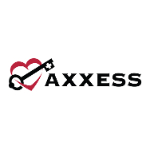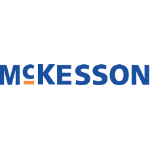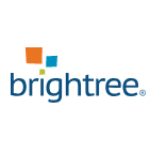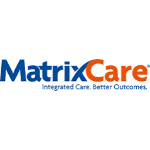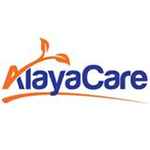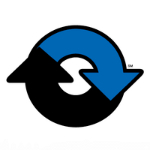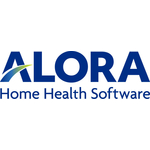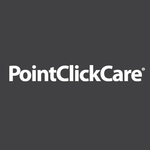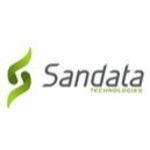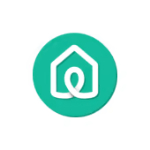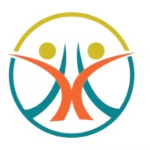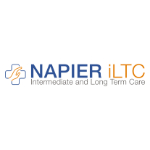TechnologyCounter provides genuine, unbiased real user reviews to help buyers make informed decisions. We may earn a referral fee when you purchase through our links, at no extra cost to you.
List of 15 Best Home Health Software
Showing 1 - 15 of 17 productsAxxess, a revolutionary software designed to optimize and streamline processes for healthcare agencies. With its user-friendly interface features, Axxess simplifies administrative tasks, enhances patient care, and maximizes efficiency. Say goodbye to...Read Axxess Reviews
McKesson, a leading and innovative healthcare technology company, provides top-notch solutions and services to bring efficiency and improvements in the healthcare industry. From advanced electronic medical records to practice management software, McK...Read McKesson Reviews
Brightree Home Health is a software designed to streamline and simplify the home healthcare industry. With its user-friendly interface and innovative features, Brightree Home Health empowers healthcare providers to efficiently manage patient care, bi...Read Brightree Home Health Reviews
MatrixCare is a leading electronic health record (EHR) software that has revolutionized the healthcare industry with its user-friendly, advanced features. Designed to streamline and optimize the daily operations of healthcare organizations, MatrixCar...Read MatrixCare Reviews
KanTime is a solution for home health and hospice agencies. With its powerful features and user-friendly interface, KanTime streamlines operations, improves communication, and enhances patient care. Revolutionize your agency with the one-stop softwar...Read KanTime Reviews
AlayaCare is a cloud-based software built for the home and community care industry. It is designed to streamline operations, optimize workflows, and enhance the overall care experience for providers and clients alike. With its user-friendly interface...Read AlayaCare Reviews
Homecare Homebase, the leading software solution for home health and hospice agencies. Designed to simplify and streamline administrative tasks, Homecare Homebase combines user-friendly technology with powerful tools to enhance productivity and impro...Read Homecare Homebase Reviews
Alora Home Health is a software that aims to transform the way home health care is managed. With its user-friendly interface features, Alora streamlines processes and improves efficiency for healthcare agencies. Say goodbye to complex systems and hel...Read Alora Home Health Reviews
PointClickCare is a leading electronic health record (EHR) platform that helps healthcare providers streamline and optimize their daily operations. With its intuitive and user-friendly interface, PointClickCare serves as a crucial tool for managing p...Read PointClickCare Reviews
Sandata Home Health is a software dedicated to simplifying and enhancing home healthcare services. Designed with precision and excellence, it aims to streamline processes and improve communication, ultimately resulting in better patient outcomes. Wit...Read Sandata Home Health Reviews
Wizart is a solution for all your design needs. This powerful software provides a seamless and user-friendly platform for creating captivating designs without any hassle. With its innovative features interface, Wizart takes your creativity to a whole...Read Wizart Reviews
MoveEasy is a software that simplifies the moving process for individuals and businesses alike. With its user-friendly interface features, it takes the hassle and stress out of relocation. Say goodbye to the days of endless paperwork and countless ho...Read MoveEasy Reviews
CareAcademy is a digital platform designed to transform the way caregivers are trained and supported. With a user-friendly interface and engaging content, CareAcademy empowers caregivers to enhance their knowledge and skills, ultimately resulting in...Read CareAcademy Reviews
Napier iLTC the innovative software solution designed to streamline and simplify the complex world of international trade compliance. With its advanced features and user-friendly interface, Napier iLTC is changing the game for businesses looking to n...Read Napier iLTC Reviews
ALFRED is more than just a software - its a dynamic, innovative tool designed to revolutionize your professional life. With its intuitive interface features, ALFRED streamlines tasks, increases productivity, and elevates your business to a whole new...Read ALFRED Reviews
- What Is Home Health Software?
- Top Reasons Why Businesses Need Home Health Software?
- What Are the Top Key Features of Home Health Software?
- What Are the Top Benefits of Home Health Software?
- What Are the Steps to Choose the Right Home Health Software?
- What Are the Types of Home Health Software for Different Industries?
- What Are the Technology Trends for Best Home Health Software?
- What Are the Deployment Options for Home Health Software?
What Is Home Health Software?
Home health software is a form of software that aids health care practitioners in the management of home health care services. The best home health software helps home health practitioners organize activities including patient scheduling, medical records, billing, and contact with other healthcare experts.
Home health software systems can also be used to track patient outcomes and manage patient treatment. The software works by making it simple for home health workers to schedule, assign, and coordinate patient care.
Calendar functions are typically included in home health software solution to assist carers in keeping track of appointments, patient information, medications, and other important information connected to providing quality home health care.
Staff can also quickly communicate with other healthcare practitioners and access patient documents via home health software, ensuring that treatment is appropriately managed and quality standards are fulfilled.
Top home health software, in addition to providing a centralised system for administering home health care, enables carers to assess care needs and generate personalizedcentralized care plans based on those needs. This helps to guarantee that all home health services are tailored to the client's specific needs and that care is delivered on time.
The best home health software can also be used to generate patient care reports, monitor results, generate billing records, and handle financial information.
Top Reasons Why Businesses Need Home Health Software?
1. Improve Clinical Documentation: Home health software promotes regulatory compliance by facilitating accurate and timely documentation of patient medical records.
2. Streamline Scheduling: Home health software solution enables experts to effortlessly streamline patient scheduling and notify carers.
3. Care Coordination: The best home health software promotes care coordination for patients and providers by making it easier to stay informed about patient needs.
4. Access Remotely: Healthcare providers can readily access a patient's records and information using Home health software from nearly any location.
5. Enhances Patient Engagement: Home health software systems facilitates patient engagement through tools such as surveys and electronic communication.
6. Increase Efficiency: Top home health software provides customised solutions that aid in the automation of workflows and the reduction of errors.
7. Report Generation: Web based home health software offers the rapid generation of reports for accurate patient progress evaluation.
8. Enhanced Security: Home health software solution provides increased patient data security to ensure data privacy and safety.
9. Improve Visibility: For improved oversight, Home health software improves visibility of patient activities and care plan status.
10. More Efficient Billing: The best home health software automates and streamlines billing, enhancing accuracy and decreasing costs.
11. Quality Improvement: Top home health software improves health care by recording patient activity in real time.
12. Assist with Revenue Collection: By connecting with existing billing and insurance systems, Home health software helps to optimise reimbursement cycles.
13. Improving Insights: Web based home health software improves patient care insights, allowing for more informed decisions.
14. Increase Compliance: Home health software solution contributes to safety by offering visibility into regulatory compliance.
15. Boost Financial Performance: The best home health software contributes to better financial performance by easing cost control and streamlining billing operations.
What Are the Top Key Features of Home Health Software?
1. Scheduling: Health visits with patients and their family members can be scheduled using web based home health software. This tool allows physicians to quickly manage care plans and alter visits based on the requirements of their patients.
2. Intuitive Interface: Home health software solution is intended to be user-friendly and simple to use. This ensures that healthcare providers can rapidly get up and running with the software and manage their home health patients effectively.
3. Electronic Health Records: Electronic health records (EHRs) are a type of home health software that allows health care practitioners to readily keep patient health information in one location. This comprises the patient's medical history, notes, test results, treatment plans, and other information.
4. Medication Management: Medication management capabilities are included in top home health software, allowing healthcare practitioners to simply keep track of patient medications, remind patients of their pills, and give instructional resources.
5. Clinical Documentation: Clinical documentation capabilities in home health software allow healthcare workers to conveniently track and manage patient appointments as well as provide clinical documentation for each appointment.
6. Resource Management: The best home health software includes features for managing financial resources, such as billing and insurance codes, as well as general resource management, which allows you to keep track of resources and schedules in the home health setting.
7. Reporting and Analytics: Top home health software allows you to generate reports and run thorough analytics on patient data. This enables health care providers to develop useful reports and obtain insights into how each patient's care plans are performing.
What Are the Top Benefits of Home Health Software?
1. Improved Efficiency: Web based home health software assists home health care providers in streamlining their operations. Home health software helps save paperwork and other tedious operations by automating administrative duties. This results in increased efficiencies, allowing physicians to focus on providing care.
2. Centralized Data Storage: Home health software enables providers to keep all clinical, billing, and administrative data in one centralised system in a simple and secure manner. This facilitates providers' access to patient data, which is critical for providing better treatment.
3. Improved Communication: The best home health software makes it easier for physicians and patients to communicate. Providers may easily stay in touch with their patients thanks to features like secure messaging and video conferencing. This helps to alleviate anxiety associated with remote care.
4. Remote Monitoring: Home health software solution also allows providers to remotely monitor a patient's health from anywhere. This can help to ensure that patients stick to their treatment plans and also alert providers to potential health risks before they become problematic.
5. Automated Billing: By automatically creating claims and billing reports, home health software can help to expedite the billing process. This reduces cumbersome and time-consuming invoicing processes, allowing suppliers to be paid fast for their services.
6. Cost Reduction: Web based home health software can assist a home health care provider cut operating costs and enhance overall financial performance by automating manual operations and reducing paper documentation.
7. Improved Care Quality: Home health software solution improves the quality of care provided by giving professionals real-time access to patient data. Providers can easily discover trends and deliver better care by utilising simple data visualisation tools.
What Are the Steps to Choose the Right Home Health Software?
1. Identify Your Needs: The first step in selecting the best home health software is to identify your requirements. Consider the size of your practise and the number of employees you have, the services you provide, the sort of patient data you need to track, and any other specific needs you may have for your specific practise.
2. Research Available Solutions: After you've established your needs, start looking at home health software solutions that can meet those demands. Look for software evaluations online and contact suppliers with any inquiries. If there are any problems with the programme, make sure to inquire about customer care and technical assistance.
3. Compare Features and Costs: Once you've identified various possibilities for home health software systems, evaluate their features and costs to see which one is the best fit for your practise. Consider the initial implementation cost as well as the ongoing costs of upgrades and maintenance.
Also, evaluate any other functions that the programme may provide that will benefit your practise, such as data recording, appointment scheduling, and patient education.
4. Select a Provider: Once you've reduced your search to a few suppliers, contact them for demonstrations or a free trial of their software. This will give you a better understanding of how the software operates and allow you to make an informed decision.
5. Finalize Your Selection: Once you've tested the software and determined which one best meets your practice's goals, make your decision and begin the implementation process. Consider training your workers on how to utilise the system, as well as software upgrades and maintenance plans.
What Are the Types of Home Health Software for Different Industries?
1. Home Health Care Software: Utilised to coordinate the delivery of home health care services. It allows healthcare providers to better manage patient care by monitoring and documenting patient health data.
2. Remote Patient Monitoring Software: Used to remotely track patient health data and talks in order to deliver better health care services outside of traditional office visits.
3. Home Care Scheduling Software: This type of software is used to track and organise in-home care visits, patient appointments, and prescription reminders.
4. Electronic Medical Record (EMR) Software: Utilised to keep patient and family medical records online. The programme facilitates patient-centered care plans and workflow, as well as collecting and analysing data from health providers.
5. Telemedicine Software: Utilised to deliver online medical services. This programme can be used to remotely diagnose and treat medical issues.
6. Nursing Home Solutions Software: Nursing home operations are managed using this term. This programme assists administrators in organising records, managing residents, maintaining clinical records, and managing employees.
7. Home Care Communication Software: Nursing home operations are managed using this term. This programme assists administrators in organising records, managing residents, maintaining clinical records, and managing employees.
What Are the Technology Trends for Best Home Health Software?
The technology trends for best Home Health Software include a focus on mobile and cloud-based platforms, patient engagement, increased data security, improved analytics, and artificial intelligence (AI).
1. Mobile and Cloud-Based Platforms: Today, web based home health software is expected to have a modern, mobile-first design that provides quick access from a variety of devices, such as phones and tablets. The underlying software platform should also be cloud-based to provide home health personnel remote access.
2. Patient Engagement: The best home health software should have capabilities that allow providers to interact with patients more readily. This could include text-based appointment reminders, online forms for easy data entry, secure patient-provider chat functions, and unique processes designed to meet the needs of patients.
3. Increased Data Security: Data security is an important aspect of health software. Data should be encrypted, and encrypted communication should be required both during transport and storage.
4. Improved Analytics: Better insights into patient care should be provided through home health software systems. This might take the shape of predictive analytics to identify at-risk patients or new reports that combine data from many sources.
5. Artificial Intelligence (AI): AI is increasingly being utilised in home health software to automate administrative and tedious duties, allowing physicians to focus on treatment. This could include automated medication alarms or automated documentation embedded into the software.
What Are the Deployment Options for Home Health Software?
Home Health Software deployment choices include on-premise, cloud-hosted, and mobile-based systems.
On-premise solutions require software to be installed on the customer's own computer or server, whereas cloud-hosted solutions rely on a third-party provider to host the programme in their own datacenters.
Mobile solutions enable consumers to access software from their smartphones or tablets. Each of these deployment methods has significant benefits and drawbacks for customers, so it's critical to carefully consider each one before selecting which is ideal for a certain application.
